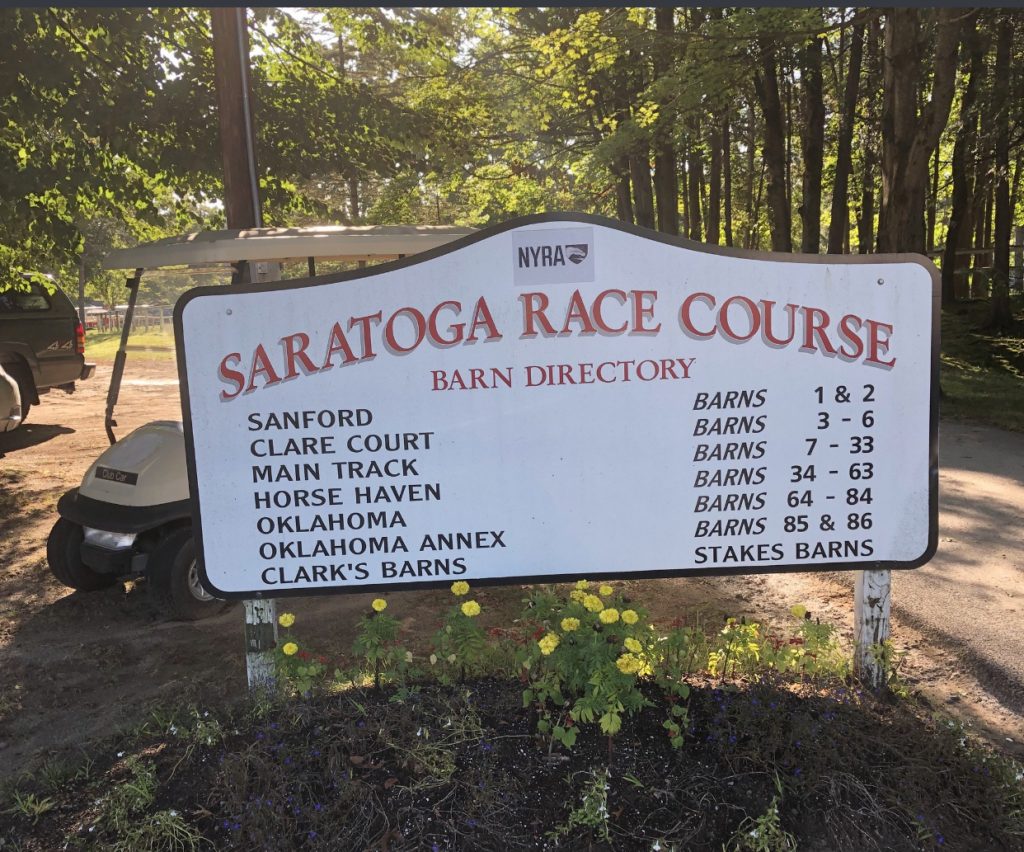
When people picture how a champion Thoroughbred should look, they like to think big. They might envision Secretariat with his muscular physique or Forego and Ruffian, who literally and figuratively towered over their competition. Yet when it comes to stature, many of racing’s greatest heroes fall short.
One of only nine geldings to have won the Kentucky Derby, Clyde Van Dusen bore little resemblance to his sire, the extraordinary Man O’War. Small, weedy and weighing a mere nine hundred pounds, Clyde Van Dusen overcame post position twenty and a swampy racing surface to notch his Derby victory. While he might have lacked his father’s height, he did inherit something more important – his heart.
In his autobiography The Shoe: Willie Shoemaker’s Illustrated Book of Racing, legendary jockey Bill Shoemaker describes Cicada as “a little bitty filly” who “looked like a muskrat.” He goes on to praise her toughness, recalling how she got knocked around and almost knocked down on multiple occasions yet would battle her way back to victory. She won twenty-three of forty-two starts on both turf and dirt, scoring victories in the Frizette Stakes, Spinaway Stakes, Mother Goose Stakes, Beldame Stakes (setting a new track record 1:48-1/5), Acorn Stakes, Kentucky Oaks and the Distaff Handicap. She was voted American Champion Two-year-old Filly (1961), American Champion Three-year-old Filly (1962) and American Champion Handicap Female (1963). Shoemaker’s “muskrat” retired as the world’s leading money winning female racehorse at the time and was inducted into the National Museum of Racing Hall of Fame in 1967.
The pocket-sized Proud Spell was also known for her perseverance and grit. Racing on questionable legs throughout her career, Proud Spell nevertheless won her first three starts as a two-year-old before finishing second in the 2007 Breeders’ Cup Juvenile Fillies. But it was her three year old season where the little lady really shined – ticking off wins in the Kentucky Oaks, Alabama Stakes, Fair Grounds Oaks, and Delaware Oaks and earning the 2008 Eclipse Award for American Champion Three-year-old Filly. Her career was cut short by a leg infection and she retired after only making a single start as a four year old. As a broodmare, her most accomplished offspring was Indian Spell (by Indian Charlie), winner of the 2013 Miss Woodford Stakes at Monmouth.
Dubbed the “Iron Lady”, Lady’s Secret cast a long shadow despite her small size. An earner of over $3 million in purse money and a record of twenty-five wins in forty-five starts, the daughter of Secretariat became the first filly ever to be awarded Horse of the Year. It was 1986 and Lady’s Secret was already an accomplished performer – having won the Maskette Stakes, Ruffian Handicap, Test Stakes and finishing second in the Breeder’s Cup Distaff the previous year. But it was the Iron Lady’s four-year-old season where she truly showed her mettle – campaigning not only against the nation’s best fillies but colts as well. Racing fifteen times, all in graded stakes, Lady’s Secret scored ten wins and never finished worse than third. Her victories included the Shuvee Handicap, Beldame Stakes, and the Santa Margarita Handicap. She also finished a respectable second in the Woodward Stakes and third in both the Metropolitan Handicap and Iselin against colts. But the two races for which the Iron Lady will always be remembered are the Whitney Handicap (against colts) and the 1986 Breeders’ Cup Distaff. In the Whitney, Lady’s Secret decimated the likes of Skip Trial, Ends Well, Fuzzy and King’s Swan over a sloppy Saratoga track under a hand ride. In the Breeders’ Cup Distaff, she went wire to wire, leaving the top fillies and mares in the nation gasping in her wake.
Standing a mere 15.1 hands (sixty-one inches) and weighing only seven hundred pounds, Dark Mirage looked better suited for giving pony rides at children’s birthday parties than racing. After an unspectacular two-year-old season where she won only two minor races in fifteen starts, it appeared that was where this tiny tot’s career was headed. After losing her first start as a three year old, Dark Mirage suddenly sprouted wings – capturing nine consecutive races, including the Kentucky Oaks, Acorn Stakes (equaling the track record), Mother Goose Stakes, Coaching Club American Oaks and Monmouth Oaks. During this win streak, she became the first winner of the New York Filly Triple Crown series. But Dark Mirage didn’t merely capture the Triple Crown, she dominated it, winning all three races by daylight. She was easily voted the American Champion Three-year-old Filly of 1968.
Fans couldn’t wait to see what their beloved “Tiny Tigress” would do as a four-year-old and she didn’t disappoint. In her first start, the Santa Maria Handicap, her bravery was on full display – hopelessly trapped behind horses at the top of the stretch, Dark Mirage fought her way through traffic to clench a nose victory in a thrilling three horse finish. She was bumped so severely at the start of her next race, the Santa Margarita Handicap, that her right front fetlock was dislocated. Despite the best efforts to save her, the petite warrior developed laminitis and had to be euthanized. She was inducted into the National Museum of Racing Hall of Fame in 1974.



